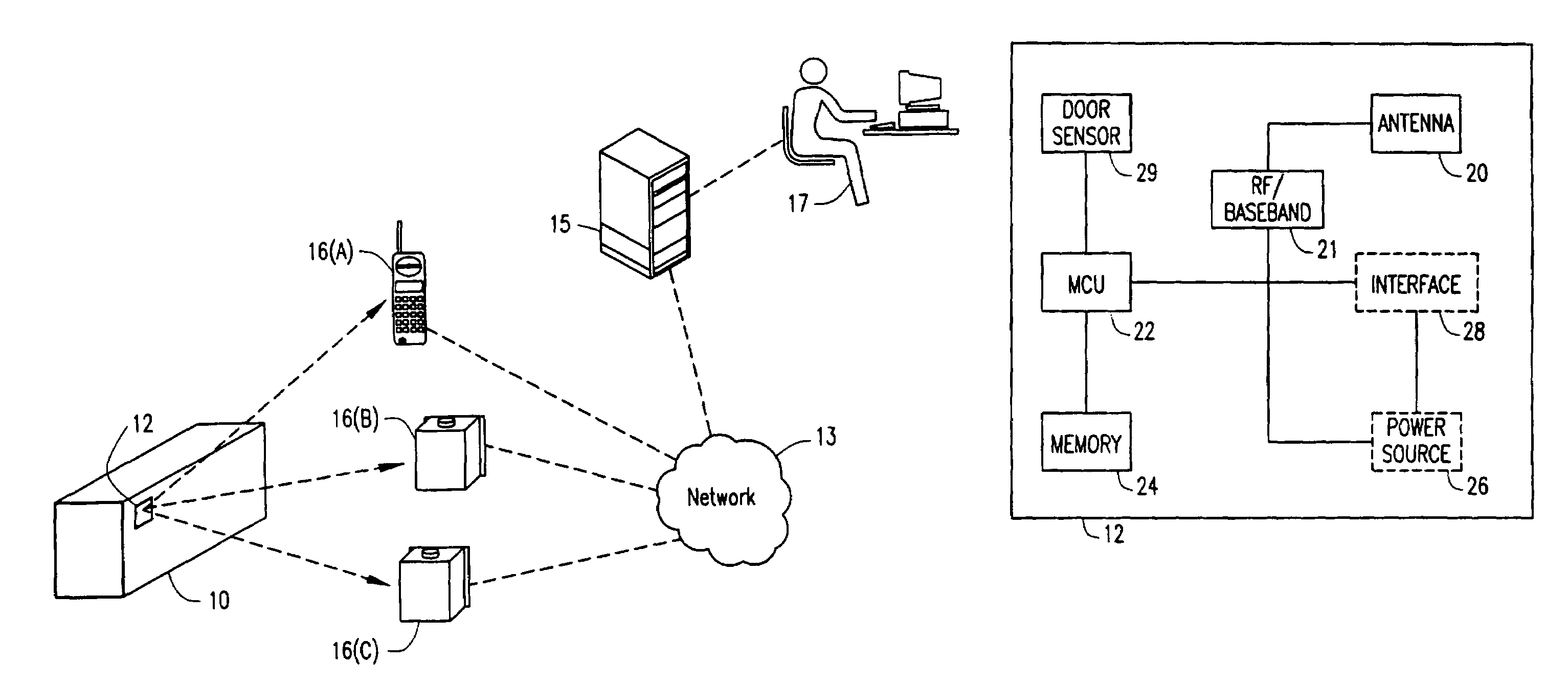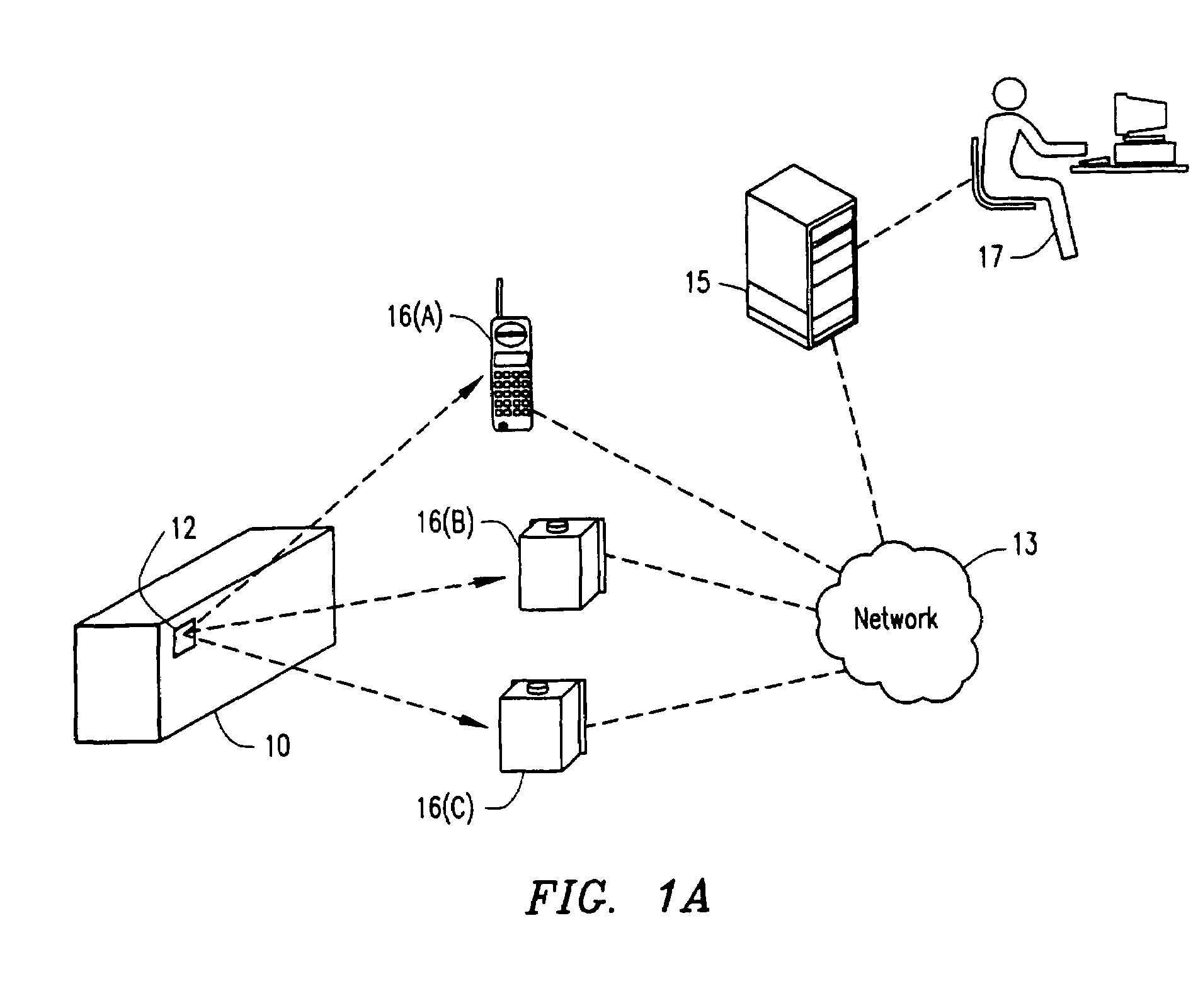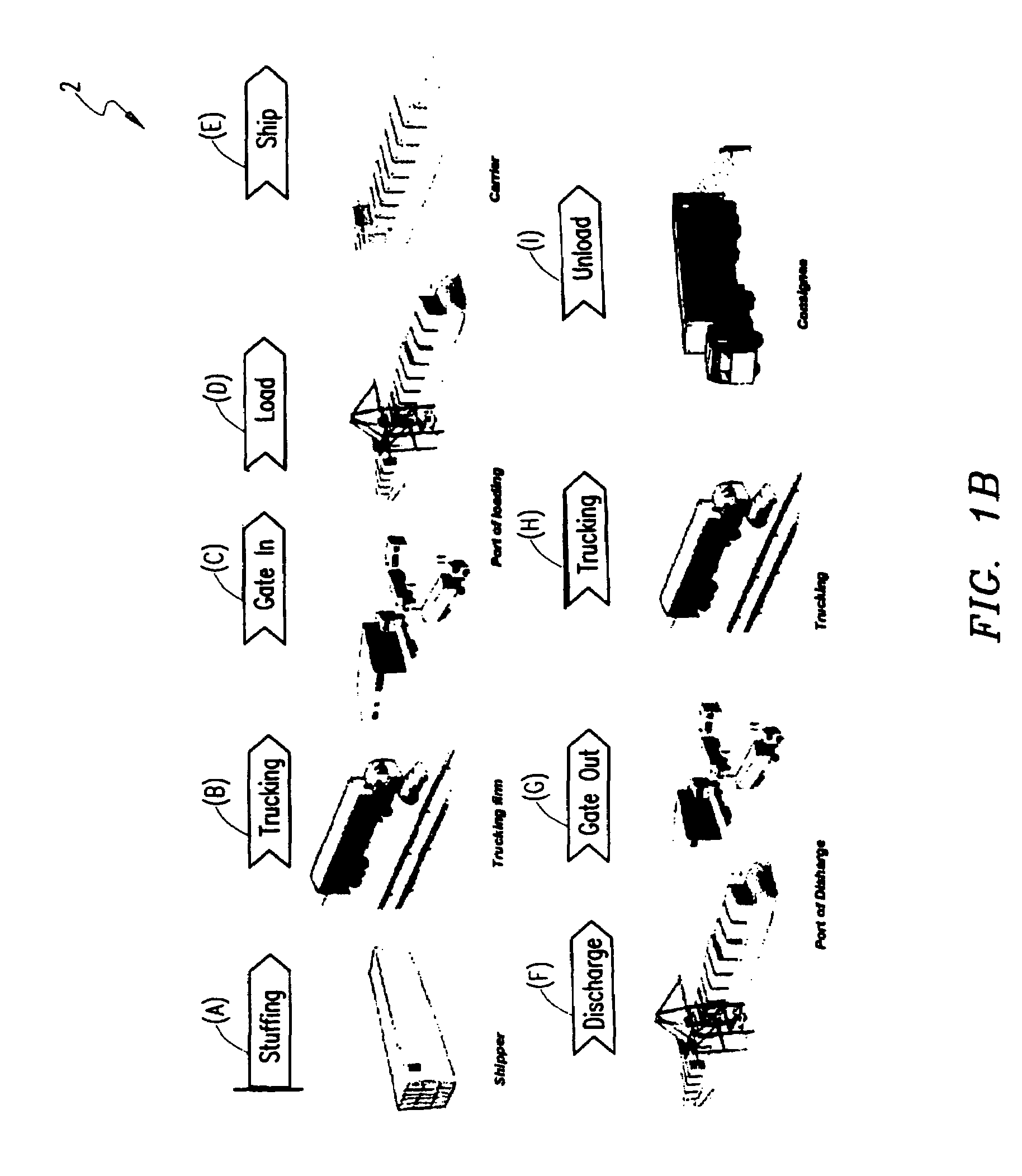Method and system for monitoring containers to maintain the security thereof
a technology for monitoring containers and security, applied in the field of method and system for monitoring the security of containers, can solve the problems of high risk of introduction of terrorist biological, radiological or explosive devices via freight containers, and inability to physically inspect containers, and achieve the effect of efficient and reliable monitoring of containers
- Summary
- Abstract
- Description
- Claims
- Application Information
AI Technical Summary
Benefits of technology
Problems solved by technology
Method used
Image
Examples
Embodiment Construction
[0046]It has been found that a container security device of the type set forth, shown, and described below, may be positioned in and secured to a container for effective monitoring of the integrity and condition thereof and its contents. As will be defined in more detail below, a device in accordance with principles of the present invention is constructed for positioning within a pre-defined structural portion of the container which generally manifests minimal structural movement due to routine loading and handling and extending through a conventional interface between the container frame and door region therealong. An elastomeric gasket is conventionally placed around the door and extends through the interface region to ensure the container is watertight and the goods thus protected from weather. The device is adapted for: (a) easy tool-free installation; (b) self powered intermittent signal transmission; and (c) sensing of the pressure of the elastomeric door seal relative thereto...
PUM
 Login to View More
Login to View More Abstract
Description
Claims
Application Information
 Login to View More
Login to View More - R&D
- Intellectual Property
- Life Sciences
- Materials
- Tech Scout
- Unparalleled Data Quality
- Higher Quality Content
- 60% Fewer Hallucinations
Browse by: Latest US Patents, China's latest patents, Technical Efficacy Thesaurus, Application Domain, Technology Topic, Popular Technical Reports.
© 2025 PatSnap. All rights reserved.Legal|Privacy policy|Modern Slavery Act Transparency Statement|Sitemap|About US| Contact US: help@patsnap.com



